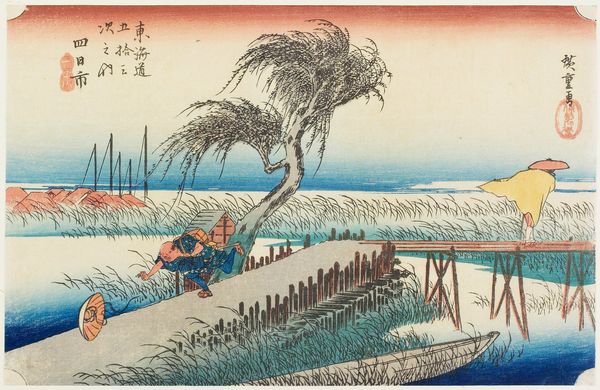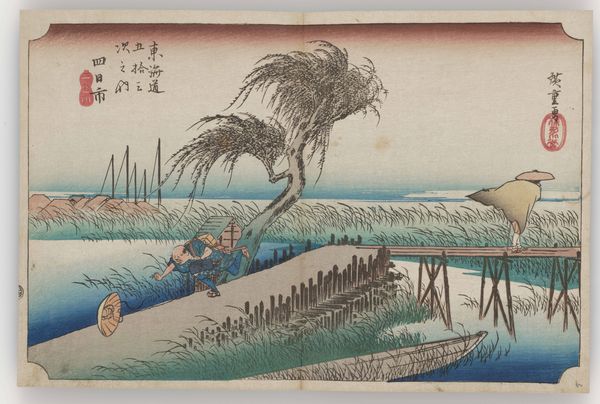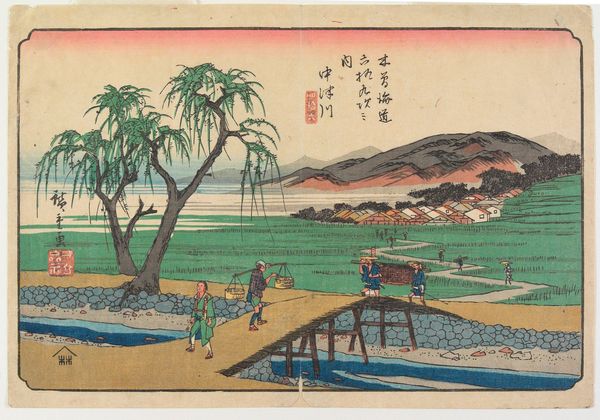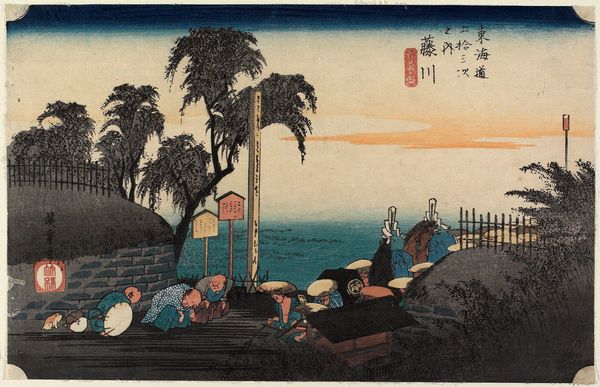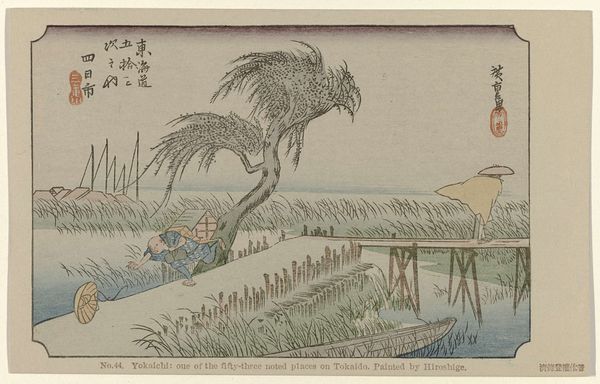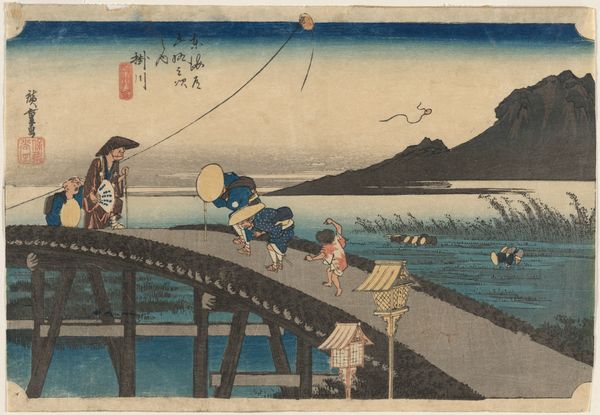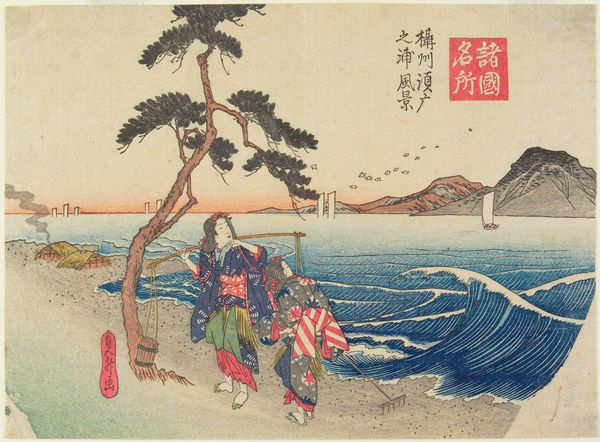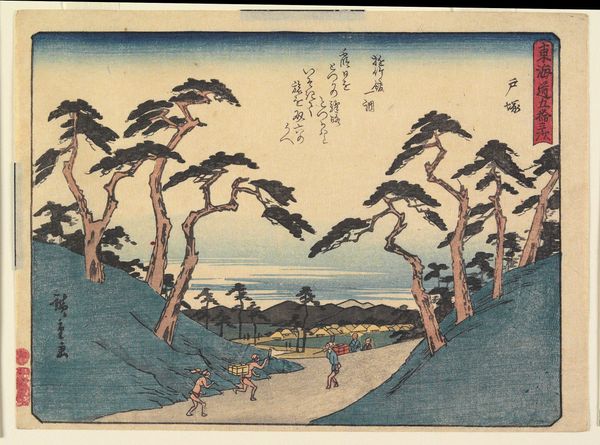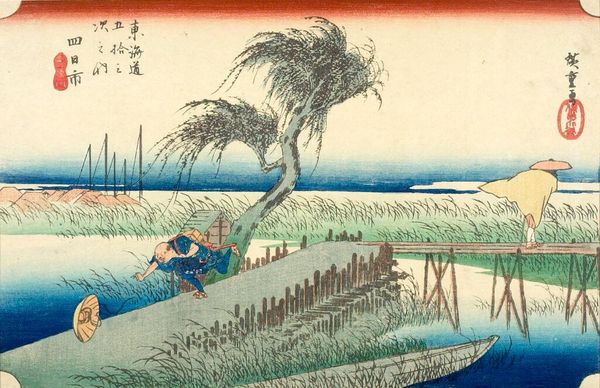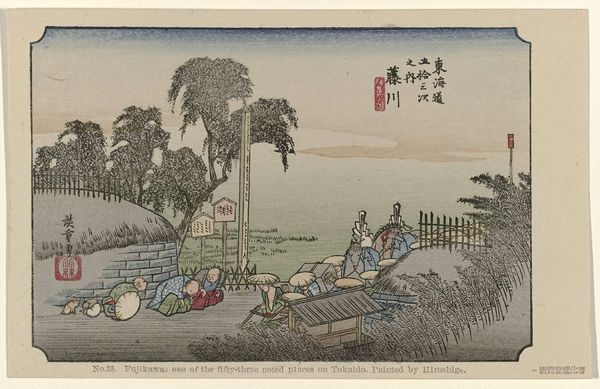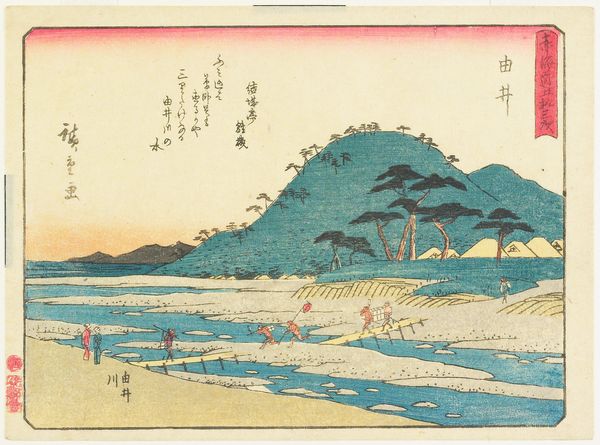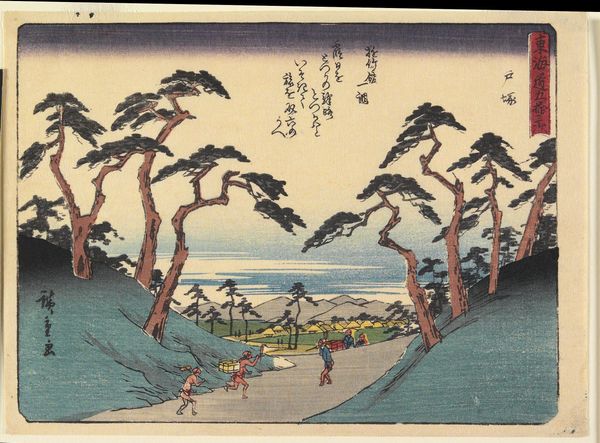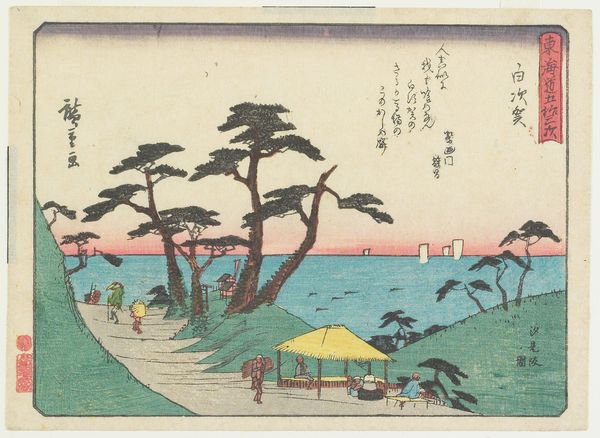
print, ink, woodblock-print
# print
#
landscape
#
ukiyo-e
#
ink
#
woodblock-print
Dimensions: 9 9/16 × 14 3/8 in. (24.3 × 36.5 cm) (sheet, horizontal ōban)
Copyright: Public Domain
Editor: So, we’re looking at “Yokkaichi,” a woodblock print by Utagawa Hiroshige, dating from around 1832 or 1833. It depicts what seems like a blustery day near a coastal town. I’m struck by the sense of movement and the way the artist captured this specific moment. How do you interpret this work in the context of its time? Curator: It’s essential to remember that Hiroshige was working within the ukiyo-e tradition, meaning "pictures of the floating world." Prints like "Yokkaichi" were often produced for a burgeoning middle class, eager for depictions of famous landscapes and scenes of everyday life along the Tōkaidō road. Editor: So it’s almost like a snapshot of tourism from the Edo period? Curator: Precisely. Think of the implications: suddenly, a wider public has access to imagery circulated for leisure and a developing cultural identity, separate from aristocratic taste. Also consider how woodblock printing allowed for mass production and distribution, affecting not only access to art but also its very definition. What's catching your eye in this particular scene? Editor: I notice how prominent the wind is—the way the tree is bent and the man’s hat has blown off. Was that a typical element in these landscapes? Curator: Not always, but it emphasizes the realities of travel. This wasn't romantic, idealized nature. This was the environment as people experienced it, shaping the narrative of a shared journey. Did it reflect on the working class that they needed to go and how they perceived the weather at that time, it had direct relationship on their social mobility Editor: That makes sense. I guess I never really thought about the politics inherent in landscape art. Curator: Exactly. “Yokkaichi” becomes more than just a pretty picture. It gives us insight into socio-economic structures and emerging cultural identities of the time. Editor: I’ll definitely look at Ukiyo-e prints differently from now on. Thanks for pointing out those deeper connections!
Comments
No comments
Be the first to comment and join the conversation on the ultimate creative platform.

